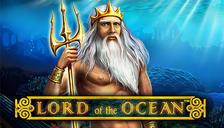
Chess
Game instructions
Getting started
Start a new game or join an open game of a fellow player.
If you start a new game you decide who is allowed at the table. You also decide whether to activate the option “Speed Chess”, where every move is limited to 3 minutes. If this time is exceeded by a player he/she loses the game and the round ends early.
Gameplay
The board consists of 64 black and white squares laid out in two colours for better visibility. The playing grid has numbers and letters around the edges like a matrix to help with orientation. Chess is played with a total of 32 figures. 16 are white and 16 are black. They are positioned in the first and last row of the board.
The figures all look different and have various names and characteristics:
Pawns
Every player has 8 pawns in his/her line-up. They are positioned in the penultimate row of every player and form the front facing the opponent. Pawns can either move forwards or move diagonally and attack.
The forwards move: When the pawn is moved for the first time it is permitted to move 2 squares forwards. If a pawn has already been used it can only move one square forward for all further moves. Pawns can only move forwards towards the opponent's line, but never backwards.
Attack other figures with a pawn: A pawn attacks opposing figures by diagonally moving one square forward (left or right). This move is only allowed when the target square is occupied by an opposing figure.
When a pawn is selected for a move he can:
- make a forwards move,
- make a forwards move and afterwards capture a figure as long as the target square is occupied by an opposing figure,
- capture an opposing figure with a diagonal move as long as the target square is occupied by an opposing figure.
Rooks
Every player has 2 rooks each in his/her line-up that are positioned on the end of the first and last rows. Rooks can be moved vertically or diagonally but cannot jump over other figures. Rooks can capture opposing figures by attacking them vertically or diagonally.
A rook can be moved in any direction (forwards, backwards, sideways) by any number of squares but will come to a halt if his path is blocked by an opposing figure or he captures an opposing figure.
Knights
Every player has 2 knights in his line-up. The knights move forwards in an L-shape - either 2 squares forwards/backwards first and one to the left or the right. This means that the destination square the knight will land on after moving will always be of a different color to its starting position. The knight is the only piece that can jump over other figures. Opposing figures will be captured if the knight comes to a rest on a square occupied by an opposing figure after an L-shaped move. Only one L-shaped move can be made per game move if the knight is selected.
Bishops
Every player has 2 bishops in his/her line-up. Bishops may move any number of vacant squares diagonally but cannot jump over other figures. Bishops can capture opposing figures by attacking them in a diagonal movement.
A bishop can be moved diagonally in any direction by any number of squares but will come to a halt if his path is blocked by an opposing figure or he captures an opposing figure.
Queen
Every player has one queen in his/her line-up. The queen is the strongest piece and can attack the opponent via any number of vacant squares diagonally, horizontally and vertically. Like most of the figures the queen cannot jump over other figures. Opposing figures can be captured if they are encountered during a movement.
The queen can be moved in any ONE direction (horizontally, vertically, diagonally) by any number of squares but will come to a halt if her path is blocked by an opposing figure or she captures an opposing figure.
King
Every player has one king in his/her line-up. He is the most important piece in the game. If your king is checkmated, the game is lost. The king may only move to a square that borders his starting position. The king is ideally kept in a protected position.
Gameplay
The pieces can be moved using the mouse. You can only move ONE of your figures to a new position per move. Click on the piece with the left mouse button and keep it pressed down until you have reached the desired position.
You will now take it in turns with your opponent to move your pieces from one square to another tactically. When possible, you should “take” an opponent’s piece. You can do this by arranging your turns in such a way that one of your pieces lands on a square where one of your opponent’s pieces is positioned. If an opponent's figure is captured this piece will be removed from the board for the rest of the game. The player who "checkmates" (captures) the opposing king wins.
"Check"
Should a player’s king be under threat, but can somehow escape to a secure position, this is called “check”.
If the king is in check, the player must remedy the situation. This can be done in one of 3 ways:
- take the threatening piece
- block the line of sight: On this occasion another piece is moved between the threatening piece and the king.
- Move the king to a safe square.
If the opponent has positioned his/her pieces in such a way that none of the above-mentioned strategies are possible, the king is in checkmate.
Special moves
In addition, special moves can also be made that have an effect on the game.
Castling king’s side and queen’s side
Under the following circumstances, the king and a rook can castle, i.e. both be moved at the same time:
- The king involved in the castling has not yet been moved in this game.
- The rook involved in the castling has not yet been moved in this game.
- The king is not in check.
- The king does not move through a square when castling in which it would be in check.
- The king may not move to a square, in which he could be directly attacked by an opposing piece (the king may not be put in check as a result of the castling).
Every square between the king and the rook must be free before the castling. During the castling the king moves two squares towards the rook (from the left or right). The rook then passes the king and stops on the next square.
Examples:
- Castling queen’s side: King E1 → C1 and rook A1 → D1
- Castling king’s side: King E1 → G1 and rook H1 → F1
En passant
If your opponent moves a pawn two squares from its original position and it lands next to one of your pawns, you can take the opposing pawn. This special move is an extended variant and must be carried out immediately.
Pawn promotion
If a pawn reaches the far edge of the board, it must be exchanged immediately for a taken piece. This can be a queen, rook, knight or bishop. The promotion remains for the remainder of the game.
End of the game
The player who checkmates the opponent’s king wins. There is also the possibility that players give up or a draw may occur:
- A draw can occur when the king of the player whose turn it is is not in check, but the player cannot legally make any other move with any of his/her pieces. This player’s king is therefore stalemated. In this situation, the game ends immediately.
- The game can also end in a draw if both players are in agreement. A draw may only be requested once per turn.
Furthermore, a game may end as a draw if the following occurs:
- Only the two kings remain in play.
- Only the two kings and either bishops or knights remain in play.




